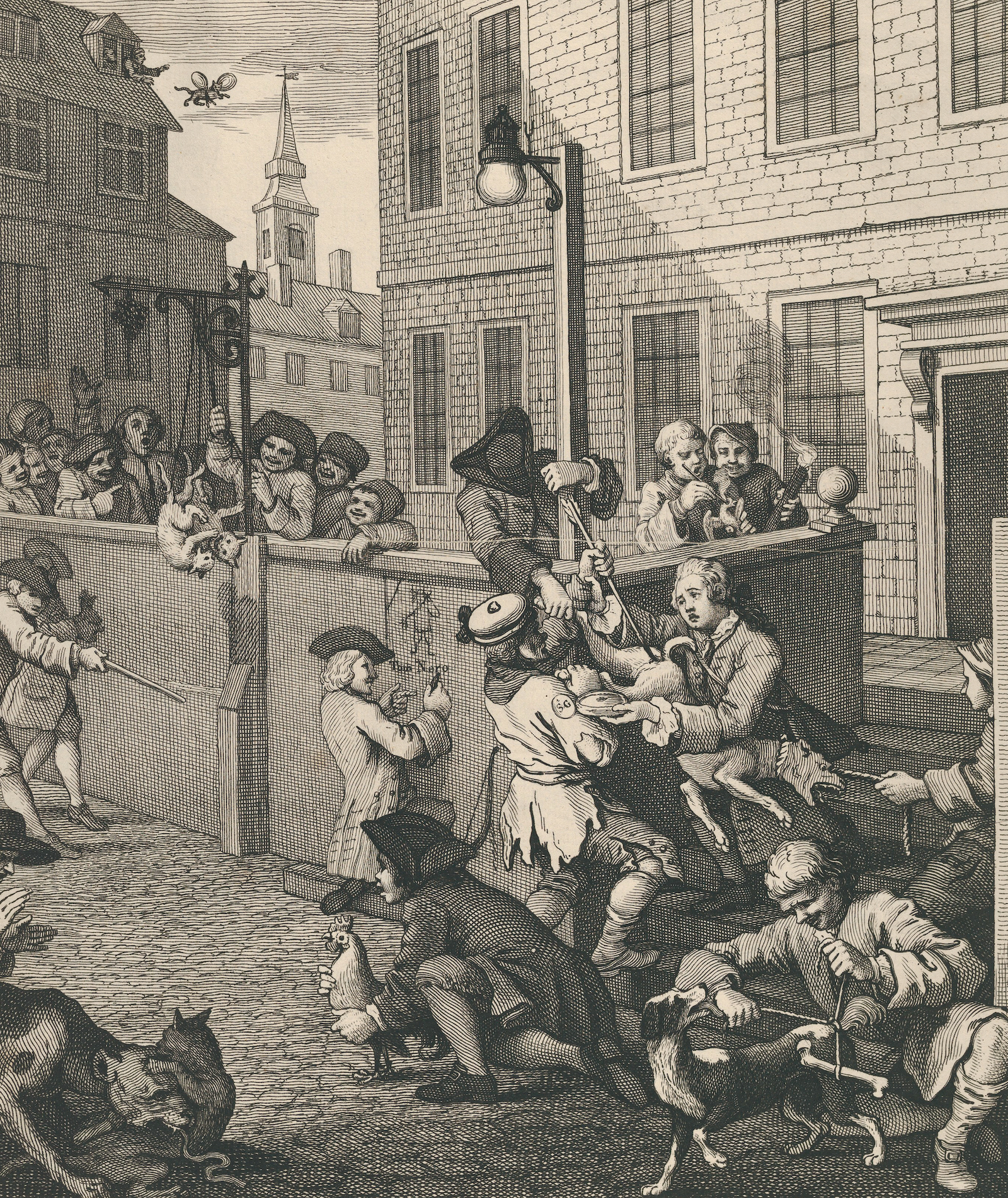Political Graffiti in Georgian Britain - 6 minutes read
In December 1731 an anonymous author was preparing for the publication of the third edition of an odd little book that had already taken Britain by storm. The Merry thought, or Glass-Window and Bog-House Miscellany was a collection of graffiti – line after line transcribed, first from London and, by the third edition, from towns and cities across Britain. There were the proud boasts of drunken sailors, the sad laments and dire warnings of discarded sex workers (‘I became all things to all men to gain some, or I must have starved’), the rebellious complaints of the poor and marginalised and the elegant rhyming couplets of aristocrats who sipped claret in the top rooms of taverns along new turnpike roads.
The success of the Bog-House Miscellany – which included messages scrawled in privies, written in chalk, carved into brick and smeared in excrement (‘There’s Nothing foul that we commit, But what we write, and what we sh—t’) – was down to its source material and the boldness of its compiler, known only as Hurlo Thrumbo. Here was a mirror held up to a world in flux and a people in all their grimy, unfiltered glory. In the decades of immense political and cultural change that followed, graffiti itself would undergo its own revolution, transforming from the everyday spiritual, superstitious marks of the medieval world to something we might recognise today. Where marks made in the Middle Ages – crosses, daisy wheels, Latin inscriptions – were largely pictorial, local and promised to protect by warding off evil, those of Georgian Britain were distinctly more wordy and more potent.
Quite when this shift from the everyday to the politically powerful took place is difficult to pinpoint. We can trace it in the humanising, often rebellious initials, outlines of ships, guns and snatches of desperate poetry left by prisoners across Britain’s most notorious jails:
All you that on this cast an eye
Behold in prison here I lie.
Pray bestow your charety [sic]
Or with hunger soon I die.
We can see it, too, in the ominous doodles of the downtrodden, immortalised by William Hogarth. In The First Stage of Cruelty (1751), for example, a figure to the left of the main scene prophesies the apparently inevitable, unavoidable fate of the criminal poor – state execution – by drawing on the wall.
But graffiti was not merely the preserve of so-called criminals or political outliers. We find it implicated in some of the century’s biggest questions – of liberty, equality, aesthetics – left by the hands of artists, imperial agents and revolutionaries alike. In 1745-46 Jacobite soldiers marching south to Derby in their campaign to unseat King George II left anti-Hanoverian messages carved on tavern windows as part of a recruitment campaign. Those loyal to the king offered rebuttals in kind (lines from an anti-Jacobite poem are visible today in St Michael-cum-Gregory in York). In 1770s Edinburgh, prisoners captured during the American Revolution and imprisoned in the castle there carved a ship flying the Stars and Stripes – possibly its first depiction this side of the Atlantic – on the back of their cell door. Two decades later French captives from the Caribbean – among them thousands of previously enslaved men, women and children given their freedom in exchange for fighting against the British – cut into the stone walls of Portchester Castle on the south coast. There, they left French place names, regimental insignia and the dates of their internment.

Of course, we can never reconstruct a full archive of graffiti from the past. For every piece still visible there may be another – or 20 – since lost. In the politically charged, volatile streets of the 1760s, in which religious bigotry, fear of immigration and calls for freedom of speech were bubbling over, graffiti was everywhere, yet rarely survives beyond a scant record in prints and paintings today. Followers of the populist MP John Wilkes, for example, would write his slogan ‘45’ – a dog whistle for intolerance – in chalk on the clothes of passersby and the doors of carriages. Today, we find these marks only in passing in the pages of contemporary diaries, or the edges of satirical prints.
The same occurred in 1780 when, over the course of one hot summer’s week, unrest in London brought the country dangerously close to revolution. In what became known as the Gordon Riots, an initially peaceful protest against newly legislated civil rights for Catholics sparked into violence, driven in part by cries of ‘No Popery!’ painted on doorways and shutters. MPs were attacked on their way to Parliament; Catholic homes were ransacked and their contents dragged out into the street and burned in huge bonfires. Aware of the danger, many Catholics and Jews across the city turned to graffiti, using the same language as a disguise, hoping to misdirect the angry mob away with shows of solidarity – something journalists noted with particular interest.
By the end of the 18th century, there was no denying graffiti’s power – it had satirised, challenged and reshaped society. Graffiti came to be dubbed a dangerous, undesirable thing. It was also viewed as peculiarly British, the work of imperialists left across a global empire, as well as at home. In 1849 the young priest James Laird Patterson cringed with mortification during his travels in Egypt when, on a trip to see Pompey’s pillar in Alexandria, he noticed the names of two Englishmen – Thompson and Button – carved into the stone and pressed with black boot polish for good measure. A year later the French novelist Gustave Flaubert, standing on the same spot, sneered:
‘There is no possibility of seeing the column without seeing the name of Thompson … This idiot has embodied himself in the monument, and perpetuates himself with it.’
Madeleine Pelling is the author of Writing on the Wall: Graffiti, Rebellion and the Making of Eighteenth-Century Britain (Profile, 2024).
Source: History Today Feed